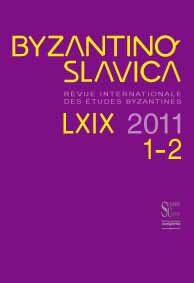Regional Developments in Late Byzantine Architecture and the Question of “Building Schools”
Regional Developments in Late Byzantine Architecture and the Question of “Building Schools”
Author(s): Jelena BogdanovićSubject(s): Fine Arts / Performing Arts
Published by: AV ČR - Akademie věd České republiky - Slovanský ústav and Euroslavica
Summary/Abstract: The parallel existence of several centers as the generators and recipients of architectural influence in the wider region of Byzantine Macedonia, such as Thessaloniki and Ohrid, obscured the significance of the city of Skopje, which flourished as a short-lived imperial city for almost 50 years (1346-1392). In this paper a number of post-1330 churches from the region of Skopje, F.Y.R. of Macedonia - St. Nicholas in Ljuboten; the Holy Saviour (later the Presentation of the Virgin) in Kučevište; St. Nicholas in Šiševo; the Assumption of the Virgin in Matejič; St. Demetrios at Markov Manastir, in Sušice; Assumption of the Virgin in Matka; St. Andrew on the Treska; and now ruined churches at Devič and Modrište on the Treska - are grouped because of related stylistic features and proportions. The churches comprise an overlooked paradigmatic ìbuilding schoolî significant for further understanding of questions of style and building workshops in the regional developments of Late Byzantine architecture (ca. 1261-1453) and, especially after the 1330s, marked by a building decline in Constantinople. Contextualizing this ìbuilding schoolî locates the path of the development of the so-called "Morava School" (ca. 1370s-1459), the final phase of Byzantine architecture, through Skopje.
Journal: Byzantinoslavica - Revue internationale des Etudes Byzantines
- Issue Year: LXIX/2011
- Issue No: 1-2
- Page Range: 219-266
- Page Count: 48
- Language: English
- Content File-PDF

